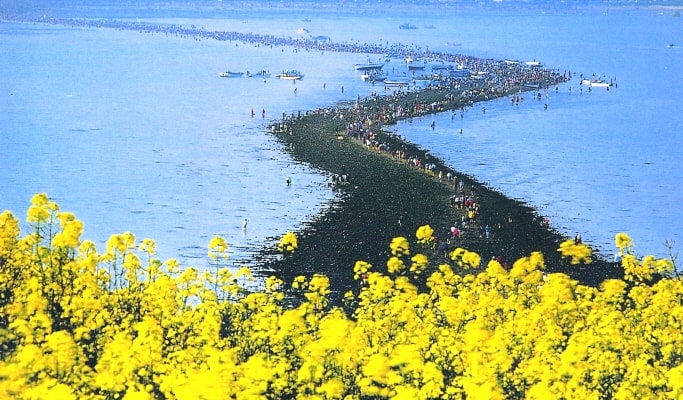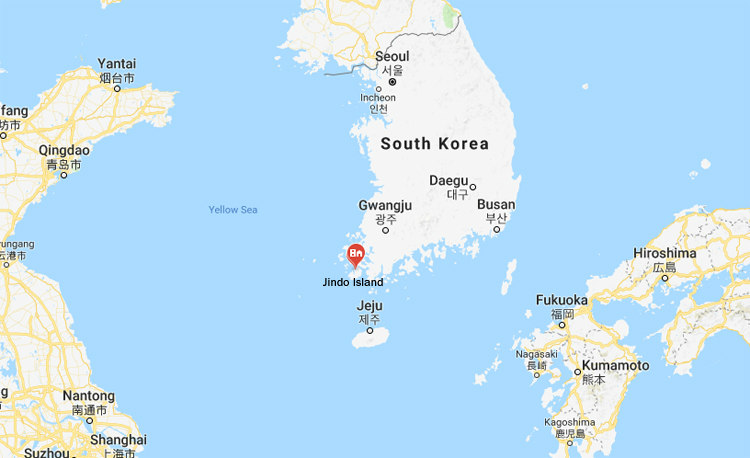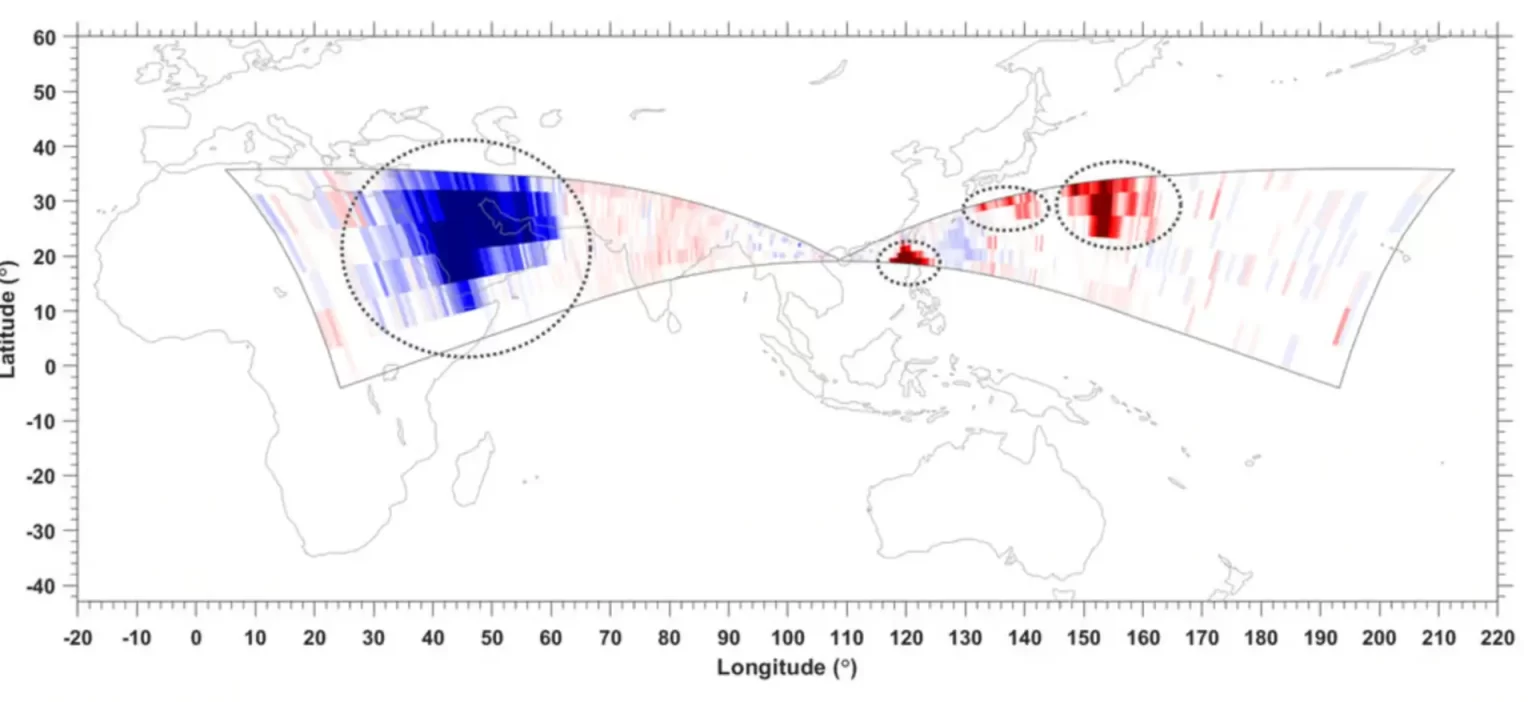In a spectacle that blends nature’s wonder with cultural reverence, the sea between South Korea’s Jindo and Modo islands parts twice a year, revealing a 2.8-kilometer-long land bridge for just one hour. Known as the Jindo Miracle Sea Road, this tidal phenomenon draws thousands of visitors to walk across the ocean floor, connecting two islands in a fleeting moment of natural magic. Often compared to the biblical parting of the Red Sea, this event is both a scientific marvel and a cultural celebration steeped in local legend.
A Natural Wonder Unveiled
The Jindo Sea Parting occurs between March and June, typically during the spring tide when the gravitational alignment of the sun, moon, and Earth creates an extreme low tide. This exposes a natural causeway, approximately 40 to 60 meters wide, stretching from Jindo Island to the smaller Modo Island in South Jeolla Province. For about an hour, festival-goers, equipped with boots and buckets, traverse the exposed seabed, collecting clams, abalone, and seaweed while marveling at the ocean’s retreat. The phenomenon, driven by tidal harmonics, was brought to global attention in 1975 by French Ambassador Pierre Landy, who likened it to the “Moses Miracle” in a French newspaper, sparking international curiosity.

The Jindo Miracle Sea Road Festival, held annually in late April or early May, transforms this natural event into a vibrant celebration. Visitors experience traditional Korean performances like Ganggangsullae (circle dance), Jindo Arirang, and Ssitgimgut (a purification ritual), alongside modern attractions like EDM shows and global music events. The festival, which attracts nearly half a million tourists annually, also showcases the region’s culinary delights, including Jindo Hongju wine and fresh seafood.
A Legend of Tigers and Faith
The cultural significance of the Jindo Sea Parting is deeply tied to a local legend about Grandma Bbyong. Centuries ago, Jindo Island was plagued by ferocious tigers, forcing villagers to flee to Modo Island. In their haste, an elderly woman named Bbyong was left behind. Desperate to reunite with her family, she prayed tirelessly to Yongwang, the Dragon King of the Sea. One night, Yongwang appeared in her dream, promising a “rainbow road” across the sea. The next morning, the waters parted, allowing Bbyong to cross and reunite with her loved ones, while the returning tide prevented the tigers from following. A statue of Bbyong and a tiger near Jindo’s coast commemorates this tale, symbolizing hope and resilience.

This story, passed down through generations, reflects the Jindo community’s reverence for nature and its belief in divine intervention. While science attributes the phenomenon to tidal harmonics—where gravitational forces align to create extreme low tides—the legend adds a layer of mystique, making the event a powerful blend of faith and fact.
The Science Behind the Spectacle
The Jindo Sea Parting is a result of the unique geography of the Myeongnyang Strait, which separates Jindo from the mainland and influences tidal ranges. The strait’s narrow, 300-meter-wide channel, combined with sediment deposits, creates a ridge that becomes visible during extreme low tides, reaching at least -30 on the tide chart. According to geoscience professor Kevan Moffett, tidal harmonics—regular gravitational patterns influenced by the Earth’s rotation and the positions of the sun and moon—occasionally align to produce this dramatic effect. As long as the strait’s shape and the islands’ positions remain unchanged, this phenomenon will persist.

Unlike the speculative claims of tiny humanoid fossils or plasma bubbles over Giza, the Jindo Sea Parting is a well-documented natural event, observed for centuries and verified by scientists. Its predictability allows for precise scheduling of the festival, though visitors are advised to check tide charts, as timing can vary slightly.
A Cultural and Natural Legacy
Jindo Island, South Korea’s third-largest, is not only famous for this phenomenon but also for the Korean Jindo Dog, a fiercely loyal breed considered a national cultural legacy since 1936. The island’s history, from its role as a refuge during Mongol invasions to Admiral Yi Sun-sin’s victory in the 1597 Battle of Myeongnyang, adds depth to its cultural tapestry. The festival, designated a special cultural event, fosters community spirit and promotes marine conservation, reminding visitors of nature’s delicate balance.

For those who walk the Miracle Sea Road, the experience is unforgettable. Torchlit processions, traditional music, and the thrill of crossing the sea on foot create a sense of unity and wonder. As with the ancient rock paintings of Madhya Pradesh, this phenomenon connects humanity to the mysteries of the natural world, blending science, culture, and storytelling.
Plan Your Visit
The Jindo Miracle Sea Road Festival is free to attend, though visitors may want to bring waterproof boots to navigate the muddy seabed. Jindo is accessible by bus or car from Seoul (about 370 km) or nearby Mokpo, with accommodations available in Mokpo’s Hotel Hyundai for a comfortable stay. The 2025 festival is expected to occur around late April, with exact dates tied to tidal schedules. Whether you’re drawn by the natural wonder, the cultural festivities, or the chance to collect fresh seafood, Jindo’s sea parting is a must-see spectacle.
The Jindo Miracle Sea Road is a testament to nature’s power and humanity’s ability to find meaning in its rhythms. Like Hannah Glass’s tragic story, it reminds us to respect the forces around us—whether they govern the tides or our daily lives. Step onto the rainbow road and witness a fleeting miracle that has captivated hearts for centuries.


